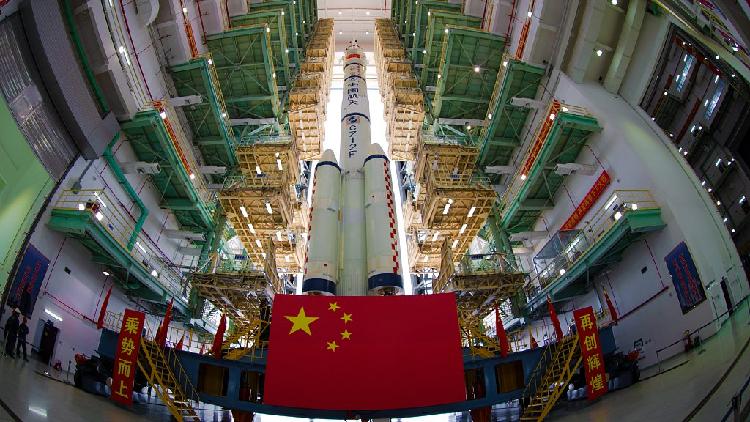Shenzhou-19 Mission: Improvements in Transport Capability and Rocket Dependability
The Shenzhou-19 spaceship boasts an enhanced design and the greatest payload capacity within its spacecraft series, all while meeting some of the most rigorous reliability and safety standards.

This latest spacecraft features an optimized design and the greatest loading capacity within the series, meeting some of the most rigorous standards for reliability and safety.
The spacecraft is composed of three modules: the orbital module, the re-entry module, and the propellant module.
The orbital module is designated for the astronauts to work and live during their flight. The re-entry module acts as the control center of the spacecraft and is the only module capable of returning to Earth, while the propellant module supplies the necessary power for operation.
Liu Qingbo from the China Aerospace Science and Technology Corporation explained to China Media Group that by enhancing the equipment and layout in the orbital module, the Shenzhou-19 spacecraft has significantly boosted its transport capacity. "This allows for more load and a more comfortable environment for the astronauts."
The optimizations have expanded the spaceship’s loading space by 20 percent, making it possible to transport a greater quantity of critical and time-sensitive supplies.
"The development team conducted extensive tests before the Shenzhou-19 manned spacecraft left the factory, fully verifying its transport capacity," Liu stated, emphasizing the thorough testing process.
He also mentioned that improvements will be incorporated into future Shenzhou missions to ensure more efficient and stable in-orbit support for the long-term functioning of the China Space Station.
**Long March-2F rocket: Backbone of China's crewed space missions**
The Long March-2F carrier rocket, responsible for launching the Shenzhou-19 crewed spacecraft, is currently China's sole rocket designated for manned missions.
This 58.3-meter-long rocket, equipped with four boosters, has a launch weight of about 500 tonnes. Known as "Shenjian," it has achieved a flawless 100-percent launch success rate since its inaugural flight in 1999.
According to Chen Muye from the CASC, rockets designed for human missions are distinguished by their advanced fault detection and handling systems, as well as an escape system that prioritizes astronaut safety. "High reliability is a hallmark of manned launch vehicles," Chen explained while detailing various escape modes.
"In low-altitude situations, we execute the escape tower mode, which utilizes the escape tower for evacuation and rescue operations. After reaching an altitude of 39 kilometers, the escape tower is jettisoned, and the payload fairing undertakes escape and rescue functions. The high-altitude escape motors located outside the fairing can propel the entire escape capsule away from a malfunctioning rocket," said Chen.
Despite the Long March-2F rocket's established track record, Chen noted that each mission includes improvements aimed at enhancing reliability and safety. For the Shenzhou-19 mission, the rocket underwent 23 technical modifications.
The escape tower situated atop the Long March-2F rocket features six solid-fuel engines of three distinct types, each serving a specific purpose. If a problem arises, the escape tower can swiftly launch the spacecraft away from the compromised rocket.
With the exception of one flight during the testing phase, the escape tower of the Long March-2F rocket has never been activated, indicating the rocket’s high reliability and safety profile.
"Although the escape tower has never been used, it serves as a steadfast assurance for our astronauts and is an essential safeguard for the entire mission," said Wan Nuo at the CASC.
Olivia Brown for TROIB News
Discover more Science and Technology news updates in TROIB Sci-Tech












